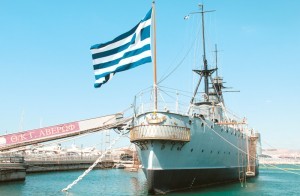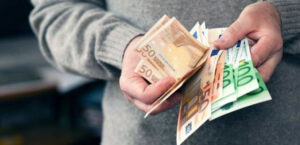These is probably no other Navy ship that has been a part of the her country’s history for almost half a century, being present in the majority of the legendary 20th century naval battles the nation she served fought. The legendary Hellenic Navy armored cruiser “George Averof” has that privilege and the place in history she has earned.
With the heroic Admiral Pavlos Kountouriotis on the bridge she managed almost alone to win two major naval battles (“Battle of Elli” and “Battle of Lemnos”) locking the Ottoman fleet inside the Straits, earning the nickname “Saitan papor” (“Satan’s ship” or “Satanic ship”) by the Turks. Her dominance in the Aegean Sea was instrumental for the course of the Balkan Wars.
After Germany’s attack against Greece in 1941, the ship’s crew disobeyed the orders to scuttle her to avoid capture by the Germans, and sailed to Souda Bay, Crete, under the constant threat of German air strikes.
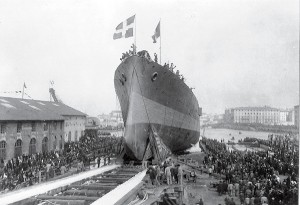
(March 12th 1910. Averof’s launching)
From Souda Bay she sailed to Alexandria and later on she was assigned to convoy escort and patrol duties in the Indian Ocean. On 17 October 1944, once again as the flagship of the exiled Hellenic Navy, under the command Captain Theodoros Koundouriotis (the Admiral’s son), she carried the Greek government-in-exile back to liberated Athens. She continued as Fleet Headquarters until she was decommissioned in 1952. She remained anchored at Salamis until she was towed to Poros, where she remained from 1956 to 1983.
In 1984 the Navy decided to restore her as a museum ship, and she was towed to Palaio Faliro, where she is anchored as a floating museum. The ship is regarded as in active service, carrying the Rear Admiral’s Rank Flag. Every Hellenic Navy ship entering or sailing in Faliro Bay honours Averof while passing.
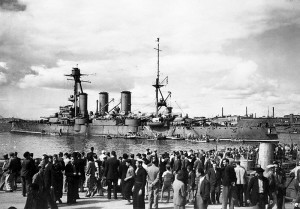
(September 1st 1911. The welcoming of “Averof” at Faliro Bay)
Now, 65 year after “Averof” was decommissioned, the famous Greek shipowner Alexandros Goulandris and a handful of dedicated citizens (Hydra’s Ecologists Club) and retired Navy officers, want to revive her and give the opportunity to everyone to see “Lucky Uncle George”, as was its Greek nickname, sail again the Greek seas.
The charity activities of Alexandros Goulandris, as well as his sensitivity on all things that have to do with tradition -and especially the Hellenic maritime tradition- are very well known. The Goulandris family is well respected in Greece with a dominant role in the international shipping community, who nonetheless choose to stay away from the lifestyle world keeping a low profile and allowing their work to do the talking.
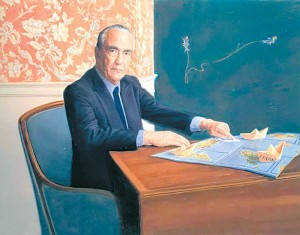
(The shipowner, philanthropist and collector Alexandros Goulandris)
But the task seems Herculean. Being anchored for decades has caused damages in many important mechanical parts. Many parts must be replaced or refurbished to pristine condition. Being an 110-year-old cruiser, means that all necessary spare parts must be made purpose from scratch. And some of them are quite complicated pieces of machinery…
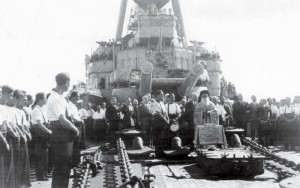
(October 17th 1944. The return of the Greek government-in-exile)
Ask me anything
Explore related questions

